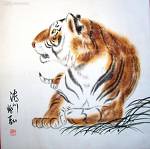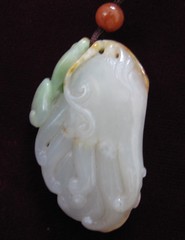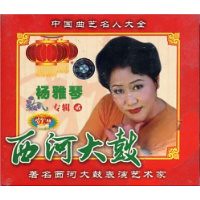| Home > Living in China > Art |
Crouching tigers in small viliage
 |
In Chinese culture, tiger is an auspicious and sacred animal, avatar of one of the heavenly guardians. Its image is believed to have magical powers, capable of warding off evil from a home and blessing the family lasting peace. That is why so many Chinese households are used to hanging tiger pictures on the front walls of sitting rooms.
A boy plays ball in front of a wall painted figures of tigers
Now, tigers have brought prosperity to one particular village, where more than two-thirds of the 320-odd households produce or trade paintings, all themed on tigers. The village is Wanggongzhuang, in Minquan County, Shangqu City, Henan Province.
Except for the very old and very young, all the villagers are able to draw or paint the great cat. Most families have their own studios, and some run as many as a dozen. It is not rare to see scores of people working at easels at the same time on the same spot.
A man draws a tiger picture.
The big cat has long been an element in the tradition of the heartland of the Central Plain, where Wanggongzhuang is located. The village is just 10 kilometers from the birthplace of Zhuang Zi (369-286 B.C.), a prominent philosopher of Taoism. The great thinker’s thoughts have been passed down through generations, and have become part of the local culture, inspiring a natural passion for the arts and letters.
The Wanggongzhuang tiger paintings are done in the traditional gongbi style ?a meticulous brushwork featuring fine lines and realistic tones. They elaborate on details as fleeting as the hairs on the striped skin, while conveying the kingly demeanor of the predator. Customers can send their particular specifications along with their orders, and the farmers can create them the way they see fit.
In addition to tiger paintings, the village has developed a variety of sideline tiger handicrafts, including embroidered tiger-patterned caps, shoes and pillows, which all find ready buyers.
In 2008, two young farmers from the village completed a 400-meter-long scroll depicting 2008 tigers ?a Guinness Book of World Records contender. An art dealer offered 360,000 yuan for the work, but was turned down because it was a gift of the village to the Beijing Olympic Games.
Artists of Wanggongzhuang produce more than 20,000 paintings a year, worth some 10 million yuan. That puts the village above all neighbors financially. Many families make hundreds of thousands of yuan every year, a colossal amount for rural residents. Farmers of Wanggongzhuang are also market-sensitive and tech-savvy. Many villagers operate their own Web sites. Now, 20 percent of local works are sold through the net, and buyers are from as far away as the United States.
While enjoying unprecedented comfort and prosperity, the people of Wanggongzhuang feel obliged to share the art with fellow farmers in the region. They’ve established painting schools to offer free courses to those in and out of the village. The fad of tiger painting has spread to communities even dozens of kilometers away, turning the whole area into an immense art workshop.
Delighted over changes in the village, one elder commented: “Throughout history, we farmers have been bending over to plough the field. Our hands were stained by mud. Now we have ink and paint on our fingers.?With tiger numbers dwindling day by day, their image will perhaps best be remembered in the works of Wanggongzhuang’s artists.
Art
 more
moreCrouching tigers in small viliage
In Chinese culture, tiger is an auspicious and sacred

China Jade History
The Chinese regard carved jade objects as intrinsically

Chinese Traditional Art---- Xihe
Famous Star of Xihe Dagu---Yangyaqin Xihe

Customs
 more
more



 print
print  email
email  Favorite
Favorite  Transtlate
Transtlate 
